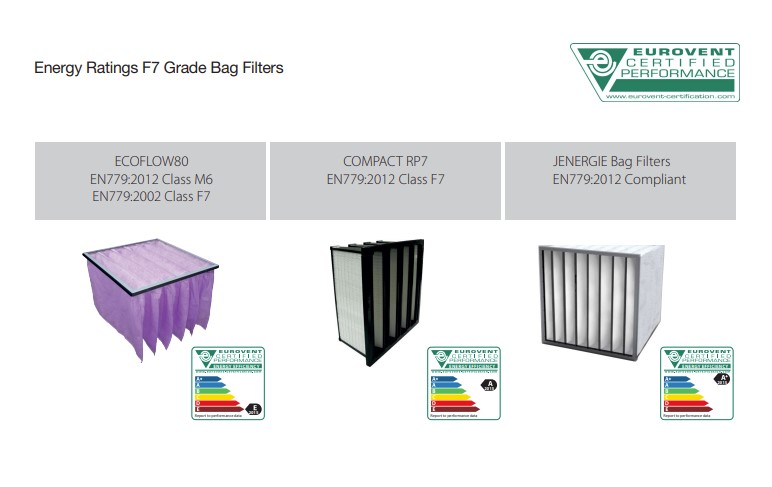
As the price of everything continues to rise and the demands for reducing CO2 emissions become more essential than ever, energy consumption related to air filters is our focus of attention.
The latest update to the Eurovent energy efficiency scheme came into effect in 2015.
With a new A+ grade and tougher limits, Eurovent 4/21 is good news for our customers and the industry alike.
VERY BEST FILTERS
Since the 4/11 programme was introduced in 2012, great strides have been taken in air filter technology. The products available today are now so efficient in their energy usage that the previous grading structure was no longer appropriate.
Eurovent 4/21 places a tougher limit on each grade and is structured to put a percentage of products into each category, so only the very best filters will achieve the highest classifications.
EUROVENT ENERGY EFFICIENCY CLASSIFICATIONS
Buyers of air filters will now find it a lot easier to find the right filter both in terms of energy efficiency and indoor air quality.
We’re a Eurovent Certified Company and have taken on board its new, objective energy efficiency classification are implementing it.
A+ IS THE LOWEST ENERGY CONSUMPTION
All air filters can be graded from A+ to E: with A+ for the lowest energy consumption and E for the highest.
There are two key benefits for buyers and end-users:
• Selecting a higher-grade filter product will really mean you are choosing one of the most efficient options possible.
• The new classification encourages greater competition and product development, meaning better air filters with better performance. This tougher Eurovent 4/21 will result in air filters that offer even lower operating costs and energy consumption.
Eurovent 4/21 – ENERGY CONSUMPTION BY FILTER GRADE (kWh)
The resulting effect of this re-structuring is that around 14% of all products will be downgraded from an A class – even those that fall just outside the new limit.
It should be remembered that the performance of these products has not deteriorated in any way; they still provide excellent energy efficiency. There is now simply more room for improvement.
It is also worth highlighting the difference in energy efficiencies between each filter grade. An A+ rated F7 filter could consume the same amount of energy as a B rated M6, for example.
So, it is crucial to choose a product according to what is required; not to over-specify the filter grade or select based upon purchase history.
The key is choosing the filter that will deliver the correct level of air cleanliness at the lowest possible energy consumption.
WORKING OUT THE kWh NUMBER USED IN AN AIR FILTER'S ENERGY RATING
• The filter is loaded with AC fine dust as specified in ISO 15957as L2in increments mtot and the pressure drop noted ∆P2
• A loading curve is then plotted on a graph
• Once the average pressure drop has been established, the equation below is used to calculate the Energy Rating in kWk. Calculation used in the new Energy Efficiency classification by Eurovent
• The kWh figure is purely a benchmark to compare one filter with another and should not be considered to be an actual consumption figure.